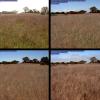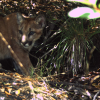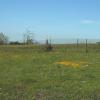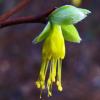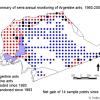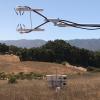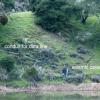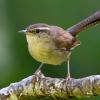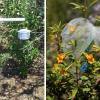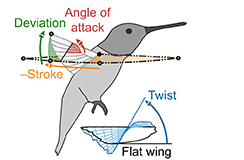Active
Active
Reducing uncertainties about the role of terrestrial ecosystems in the global carbon cycle requires better understanding of the spatial and temporal variation in biologically-mediated sources and sinks of carbon.
Active
Wireless digital camera traps are providing unprecedented and detailed information on some of JRBP's big unknowns, such as the abundance and behavior of large predators and the nature of biological corridors linking JRBP to other areas.
Active
This long-term experiment involves replicated plots in serpentine grassland that have been monitored annually since 1983 to assess the impact of gopher disturbance and rainfall variability on the composition of serpentine vegetation.
Active
Shrubs of the regionally endemic Dirca occidentalis (western leatherwood) occur in numerous plant communities within Jasper Ridge Biological Preserve. D.
Active
Argentine ants are an invasive species worldwide and have invaded roughly a third of JRBP from disturbed areas near the Preserve's perimeter. Since 1993, students, postdocs, and other affiliates in Prof.
Active
The Jasper Ridge Eddy Flux station provides data that can be used to address questions that span many different times scales and spatial scales: 1) how do different ecosystems respond to environmental changes? 2) how do changes in ecosystem metabolism feed back to affect the environment?
Active
Originally intended as a drinking water reservoir, Searsville Lake has always been too turbid for that purpose, thanks to the high input of sediment from the largest of the lake's five tributaries, Corte Madera Creek.
Active
The Jasper Ridge seismic station (JRSC) was installed in 1994 by a team from Stanford (Robert Kovach, Geophysics), the USGS, and UC Berkeley. It is part of a network of seismic stations in northern and central California maintained and operated by the Berkeley Seismology Lab (BSL).
Active
The Jasper Ridge bird monitoring program consists of two separate but complementary surveys whose goal is to create a body of data that can be used to detect trends in many aspects of avian ecology, both within specific habitats and for JRBP as a whole.
Active
This study uses the microorganisms found in the floral nectar of the sticky monkeyflower (Mimulus aurantiacus) and Warrior plume (Pedicularis densiflora) to ask basic questions about how ecological communities assemble.


